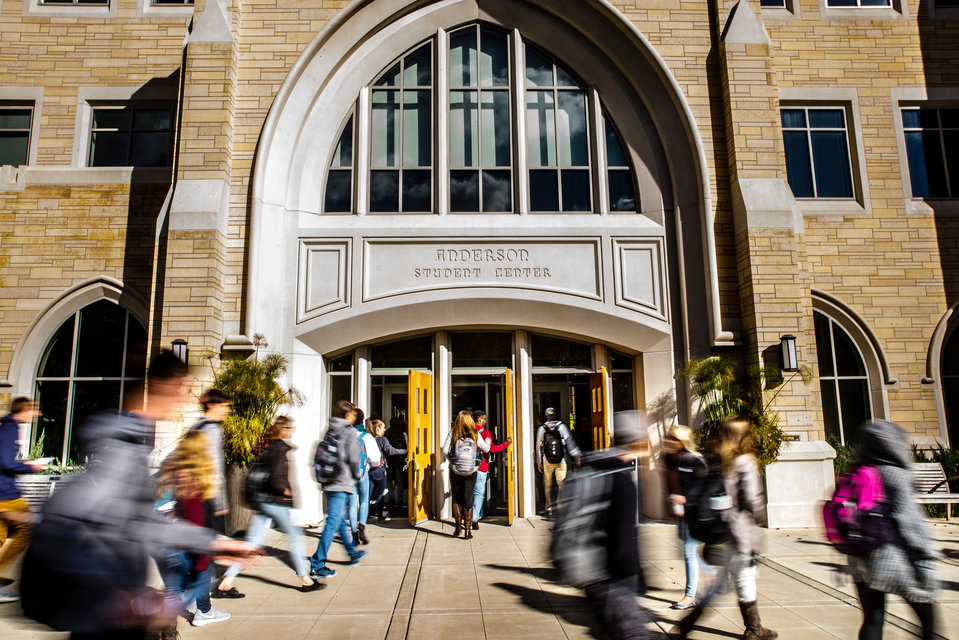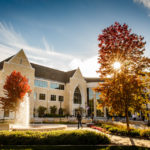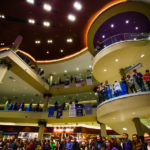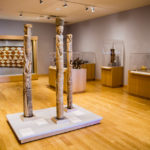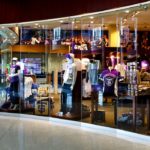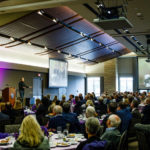Perhaps the best way to sum up the effect of the Anderson Student Center (ASC) is the widening eyes of a first-time visitor. Or maybe it’s the head shake and smile of an alum standing in the atrium during convo hour, comparing the building’s buzz to the lack of anything like it during his own college days. Or maybe it’s the adjectives thrown around when talking about the ASC: awesome, beautiful, great.
However it’s best described, the ASC – since it opened its doors in 2012 – has become an integral part of the St. Thomas landscape, a crown jewel in the center of campus, both physically and in spirit.
“It’s the heart of campus. It brings so much energy and life,” said Jenna Johnson ’13. “It’s one of the best things to ever happen to St. Thomas.”
Johnson is one of the alumni who were at St. Thomas before, during and after construction of the ASC. These alumni provide a good personal barometer for the changes the building brought to the school. In some ways those developments are large and obvious (225,000 square feet is quite a bit of change), and in other ways more subtle. Many are centered around the cultural shift that comes from St. Thomas having a true, main hub on campus.
“There’s a common term that’s thrown around, and that is that student centers are the living rooms of campus. That’s a big piece of what the ASC does: It provides a comfortable place that’s really the heart and soul of the university,” said Ed Kim, assistant director of campus life, whose office is in the ASC. “There’s a lot of benefit for having a space like that, and it allows for so many wonderful, powerful interactions.”
'One-stop shop'
As ASC director David Lemon is quick to point out, a building doesn’t bring life to campus; people do. However, having a building where so much of that life is centered offers a visceral view into how much goes on at St. Thomas every day.
“It was really surprising when I was a freshman seeing how many people were in here all the time,” said Herbie Li, a junior accounting major who works at the ASC’s main desk. “It’s basically a one-stop shop for everything. … This place can really help expand your college experience in a lot of different ways.”
Lemon said the ASC averages about 10,000 visitors per day throughout the year, a number that reflects the vast range of reasons to come to the building: to eat; meet with friends, classmates, faculty or staff; study; attend a social or club event; bowl, play video games or play pingpong; buy clothes at the Tommie Shop; or create something in the MakerSpace. For more and more Tommies every year, the ASC is where they spend the bulk of their time on campus outside the classroom. As that has become the case, the ASC in has helped rewire the way Tommies think about coming together.
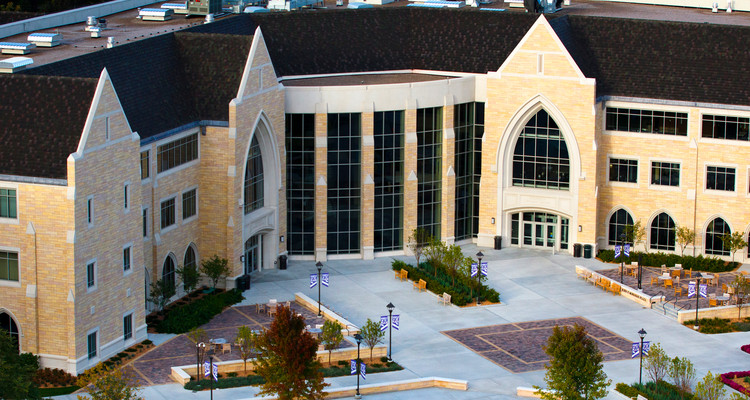
“When people use that term ‘home’ and think about campus, they’re not thinking about their residence hall necessarily. It’s where they spend their downtime. That’s the student center, that’s the power and draw of it,” Kim said. “That’s the home away from home, where you let your guard down to an extent and connect with other people. It’s a powerful thing.”
Student clubs and St. Thomas Activities and Recreation (STAR) have taken advantage of the facility’s gathering power to pull together Tommies for all kinds of reasons: STAR hosts events there every Thursday, Friday and Saturday throughout the school year, and the many, many meeting rooms have become a destination for clubs and study groups.
“It’s a great, neutral, nonacademic place to hang out,” senior Erin Engstran said.
The idea of a neutral place goes a long way in a healthy higher education setting, a place where students, faculty and staff all mingle on equal footing.
“We see more and more staff and faculty members having informal meetings in the atrium, which is nice because students get to see them in a setting that’s not them behind a desk. It makes everyone more accessible,” Lemon said.
Designed that way
With so many services and functions within the ASC, it’s almost easy to take for granted the intentionality that goes into making everything feel like it belongs under the same roof. In pointing out why it has become her favorite place to study, Engstran cited the gorgeous natural light throughout the building, which is indicative of the open design plan that has become such a hallmark element of the ASC as a whole, with light, sights and sounds everywhere.
“It definitely does help [the culture of campus]. Pretty much everything is either visible or audible,” Lemon said. “It’s an open, vibrant space. You can see the activity here, and our traffic is never hidden. It’s here and you can feel it.”
Much of that feel is possible because the ASC was designed from scratch; most colleges or universities have to renovate or build off an existing student center or union.
“We got to build something from the ground up, something really unique. Our open floor plan, open concept, you don’t see in a lot of other buildings because it wasn’t the style. … Having a five-year-old building feels different than other campuses, but it has afforded us a lot of opportunities of what we can do,” Lemon said. “When you look at it from the outside, with the [hallmark St. Thomas] Mankato-Kasota stone, it fits in. But when you come inside it has a perfect balance of very modern, clean, new appearance, but it doesn’t feel like we’re in some 22nd century future. It has a contemporary feel, it feels comfortable. People come in and, for the most part, are always impressed.”

Impressive is a word that comes up often in Johnson’s interactions with alumni returning to campus, and it’s one that’s used readily during the many community events the ASC hosts. James B. Woulfe Alumni Hall has a capacity for nearly 1,000 seated people. The ASC can accommodate everything from two people meeting for coffee at The Loft, to wedding receptions, to town hall discussions hosted by Congresswomen, to the monthly First Friday Speaker Series.
“It’s kind of the missing puzzle piece that St. Thomas needed. St. Thomas has great academics, great classroom facilities, but didn’t have that central location for everyone to meet. Now we do,” Johnson said. “And not just students, but alums, prospective students. We hold camps there. The community can use those resources too.”
Pulling all those elements together, it’s easy to see why it can be difficult to find the best way to describe the ASC; it is so many different things to so many different people. The main commonality, though, seems to be that the ASC is now a part of St. Thomas, and the entire community is better off because of it.
“I feel fortunate to have something like this on our campus,” Li said. “I can’t imagine it not being here.”
